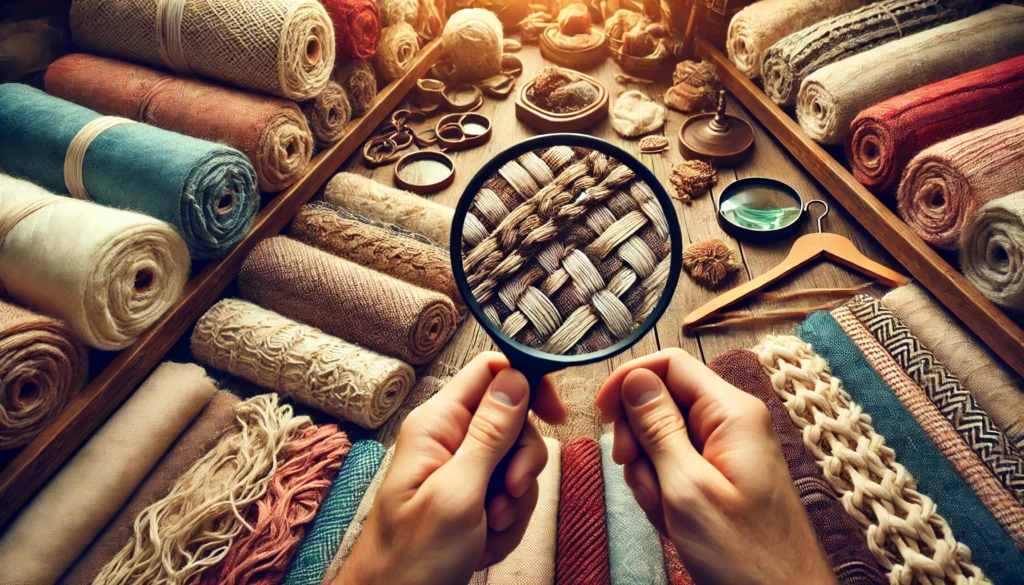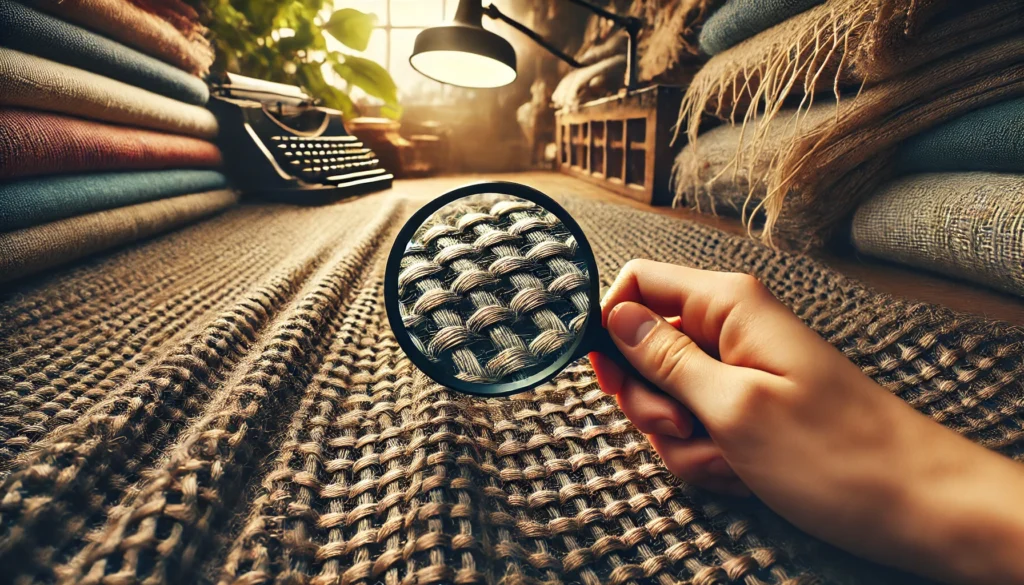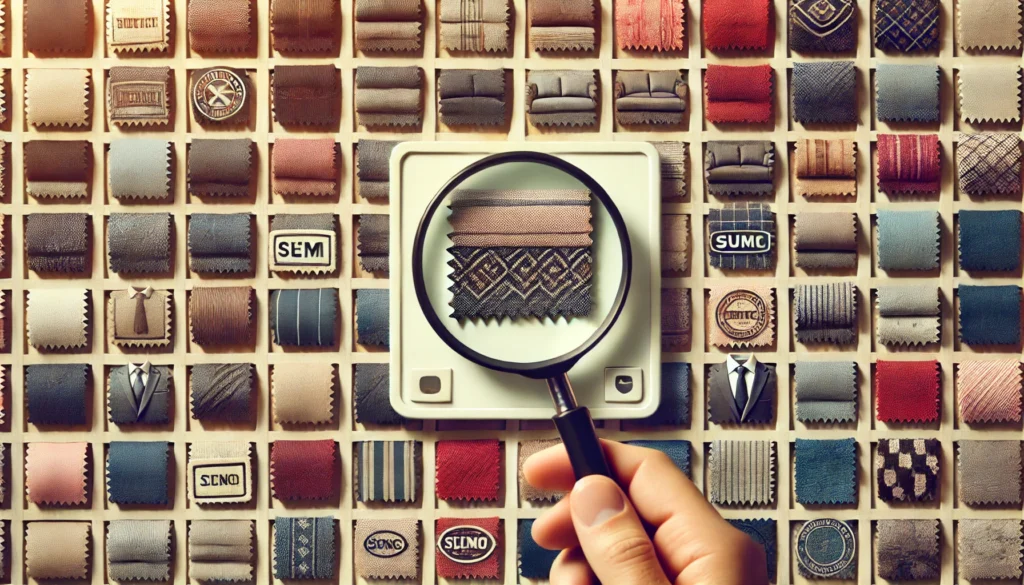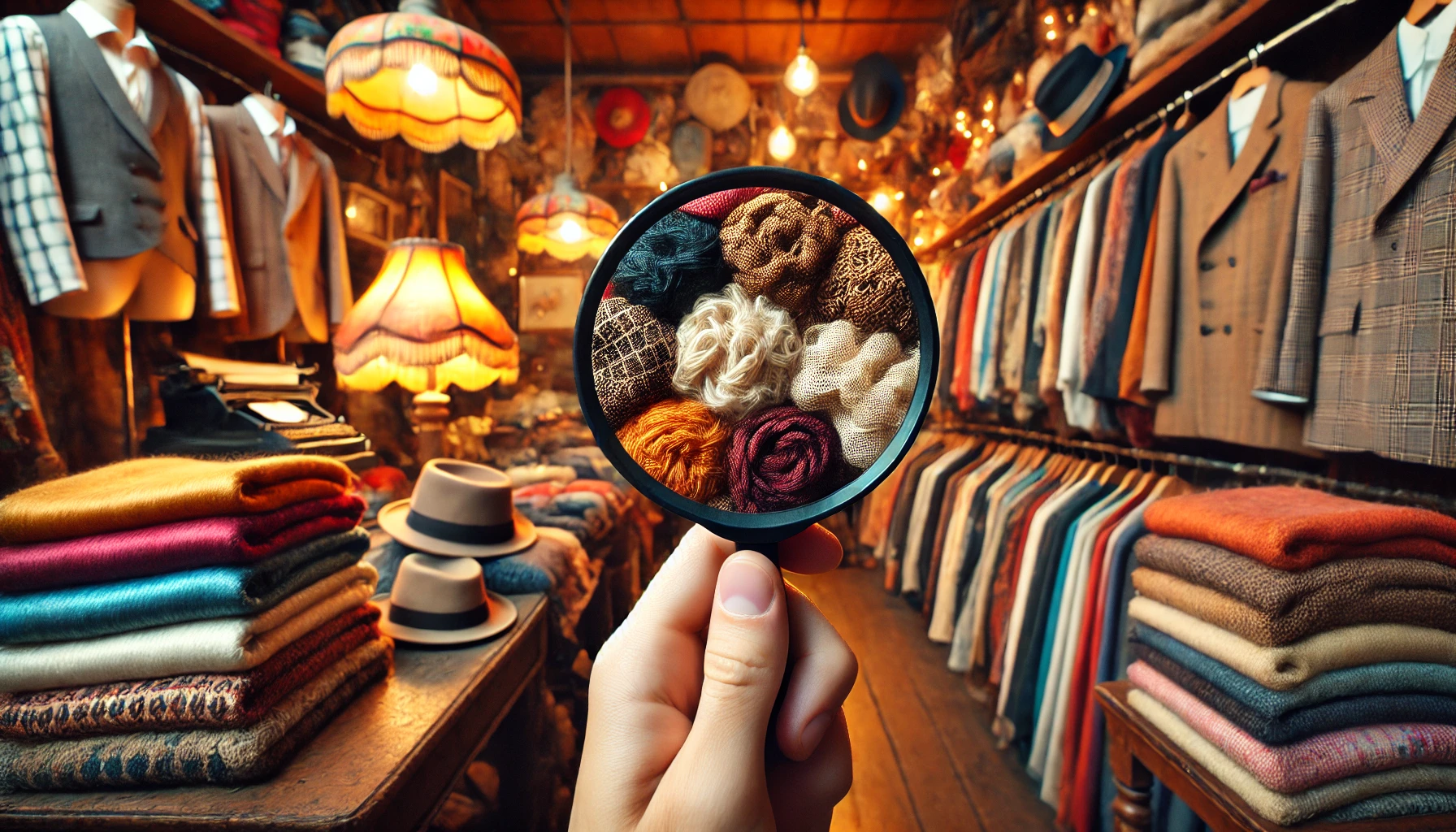We’ve all been there, sifting through racks of clothing at our favorite thrift store, unsure of which items will hold up over time. But what if we told you there’s a way to distinguish high-quality fabrics from the rest? Yes, understanding fabric types, texture, weave, and brands can boost your thrifting game considerably. So, are you ready to learn these insider tips on recognizing quality fabrics that will guarantee your thrifted items last longer and look better? Let’s get started.
Understanding Basic Fabric Types

Knowledge is power, especially in the domain of thrifting. We’re going to help you take your thrifting game to the next level by understanding basic fabric types. By identifying fabric characteristics and following care instructions, we can unearth true gems and avoid potential pitfalls in the thrift store.
In fact, master online thrifting by learning these techniques can lead to discovering unique finds that enhance personal style.
First, let’s talk about cotton. It’s soft, breathable, and durable, but it can shrink if not cared for properly. Check the tag for care instructions to guarantee it’ll last in your wardrobe.
Then there’s wool, it’s warm and resilient, but itchy and requires delicate care. If it’s labeled ‘dry clean only’, consider if you’re up for the extra effort.
Silk is luxurious and cool to the touch, but it’s delicate and can be a pain to maintain. So, unless you’re willing to hand-wash or dry clean, it might be best to steer clear.
Synthetic fabrics like polyester are durable and easy to care for, but they aren’t as breathable as natural fibers.
In the world of thrifting, knowledge of these fabric types is your secret weapon. It’s our little secret, so use it wisely.
Next time you’re in that thrift store, you’ll be a fabric whisperer!
The Importance of Fabric Weight

Beyond the type of fabric, another key to revealing the quality of your thrift finds lies in understanding fabric weight. Fabric weight directly impacts how a garment drapes on your body. It’s a big deal, folks. A heavier fabric will have a more structured drape, while a lighter one will be more fluid.
| Fabric Weight | Garment Drape |
|---|---|
| Heavy | Structured |
| Medium | Balanced |
| Light | Fluid |
Have you ever worn a dress that seemed to cling to every curve, making you feel like a Hollywood starlet? That’s a lighter fabric. Or a blazer that made you feel like a boss, standing crisp and tall? That’s a heavier fabric. The key is picking the right fabric weight for the right garment. You wouldn’t want a heavy fabric for a summer dress, right? Or a light fabric for a winter coat.
Recognizing Natural Vs Synthetic Fabrics

Diving into the world of natural versus synthetic fabrics, it’s essential to know your silk from your polyester.
Natural fabrics like cotton, silk, and wool are sourced directly from nature—think fluffy cotton plants, silkworm cocoons, and fluffy sheep. Synthetic fabrics, on the other hand, are man-made and include materials like polyester, rayon, and nylon.
But why does this matter when we’re on the hunt for high-quality thrifted pieces?
First, natural fabrics tend to be more durable and comfortable, but they might require a bit more care. We’re talking special wash cycles and careful ironing.
Second, there’s the question of sustainability factors. We’ve all been hearing about how fast fashion is wreaking havoc on our planet.
Here’s a tip: natural fabrics are generally more sustainable than synthetics because they biodegrade faster.
Touch Test: Feel the Texture

Let’s roll up our sleeves and plunge into the touch test – feeling the texture. This is where your hands are your best tools. Ever notice how a high-quality fabric just feels different? That’s what we’re going for.
We’re not talking just soft or rough, we’re feeling for the drape, the weight, and the thickness of the material. Quality fabric should feel substantial but not overly heavy, and it should drape well without being stiff. It’s like Goldilocks, we’re looking for that ‘just right’ texture.
Now, why is this important? High-quality fabrics not only feel better, but they also hold up better. They’re the marathon runners of the fabric world.
With proper fabric care and maintenance, they’ll serve you well for years.
Visual Inspection: Check the Weave

Having understood the importance of touch, it’s time we turn our attention to our eyes.
We’re going to explore the world of weave patterns and fabric construction, key components of determining fabric quality.
Now, you might be thinking, “Weave what?” Don’t worry; it’s not as complicated as it sounds. The weave pattern is simply how the threads of the fabric are interlaced. When you look closely, you’ll notice different patterns. These can be tight, loose, or somewhere in between.
Why does this matter? Well, a high-quality fabric usually has a tighter weave, meaning the threads are woven closely together. This not only makes the fabric stronger but also less likely to fray or tear. So, when you’re thrifting, be on the lookout for these close-knit families of threads!
Next up is fabric construction. This is about how the fabric is made. It’s a bit technical, but here’s the gist: good fabric has an even, consistent weave throughout. If it looks uneven or irregular, it mightn’t be the best quality.
Conducting a Burn Test Safely

Despite the possibly intimidating name, a burn test can be a useful – and safe – tool in our fabric identification arsenal. We just need to make sure we’re taking the right safety precautions.
First, never perform a burn test in an area with flammable materials. We recommend using a metal container or sink and keeping a supply of water nearby. Also, always use tweezers to hold the fabric sample – let’s avoid any singed fingertips, shall we?
Now, onto the test itself. Each fabric type has unique burn characteristics that can help us identify it. For example, cotton burns quickly and leaves a soft, grey ash, while polyester melts and forms hard black beads.
But remember, we’re not looking for a bonfire here. We’re talking about a tiny fabric sample, folks. It’s not going to go up in a blaze of glory, but it will give us important clues about the quality of the material.
Just remember – safety first. We’re all for finding high-quality fabrics, but not at the expense of our eyebrows. So, let’s keep the burn test safe, controlled, and informative. It’s an effective way to identify high-quality fabrics – without the drama.
Evaluating Fabric Durability

After making sure our thrift finds aren’t going to melt under pressure, we also want to check how they’ll hold up to wear and tear. That’s where evaluating fabric durability comes into play. It’s a biggie, folks! After all, who wants a stunning vintage dress that disintegrates after one spin around the dance floor?
When we talk about fabric durability, we’re really talking about two things: fabric longevity and wear resistance. Longevity is how long the fabric itself will last before it starts showing signs of wear. We’re talking about things like pilling, fading, or fraying. A quick tip? Dense, tightly woven fabrics typically last longer than loose or open weaves.
Wear resistance, on the other hand, is all about how well the fabric can withstand the rough and tumble of everyday life. You know, like being squashed in a packed subway or surviving an accidental spillage of your morning coffee.
It’s good to give the fabric a gentle pull and see how it springs back. The quicker it returns to its original form, the stronger it likely is. So, get ready to tug, pull, and stretch your way to thrifting success!
Spotting High-Quality Stitching
Now, let’s shift our focus to one of the unsung heroes of fashion – the humble stitch. The quality of stitching can truly make or break a garment.
We’re going to show you how to spot exceptional stitch patterns and seam finishes in your thrift shop finds.
Look for even, tight stitches. If you can easily pull a stitch apart with your fingers, it’s a no-go. High-quality garments will often have more stitches per inch, which adds strength and durability.
Next, examine the stitch patterns. For quality, we want complexity. Zig-zags, overlapping lines, even decorative designs – these are the hallmarks of a garment made with care.
But don’t stop there. Turn the garment inside out and inspect the seam finishes.
These are the edges of the fabric where pieces are sewn together. High-quality pieces often have finished seams, such as a French seam or a flat felled seam, which hide raw edges and prevent fraying.
Brands Known for Quality Fabrics

While it’s true that stitching and seam finishes can give us significant clues about the quality of a garment, knowing which brands consistently use high-quality fabrics can take your thrifting game to the next level. We’re not just talking big-name luxury labels here; many vintage brands are also renowned for their use of durable, high-grade materials.
To help you navigate the racks, we’ve compiled a short list of brands to keep an eye out for. You’ll be surprised at the gems you can find – and at a fraction of the retail price!
| Vintage Brands | Luxury Labels |
|---|---|
| Levi’s | Gucci |
| Pendleton | Prada |
| Laura Ashley | Louis Vuitton |
Conclusion
So, we’ve learned a ton, haven’t we? From judging fabric types to checking out the stitching, we’re now pro thrifters! Remember to trust your touch and look for that high-quality weave. If we’re ever unsure, let’s not forget the burn test (safely, of course!). Thrifting is a treasure hunt, and we’re the explorers. So let’s get out there and find some high-quality fabric gems, all while having a blast. Happy thrifting, friends!

